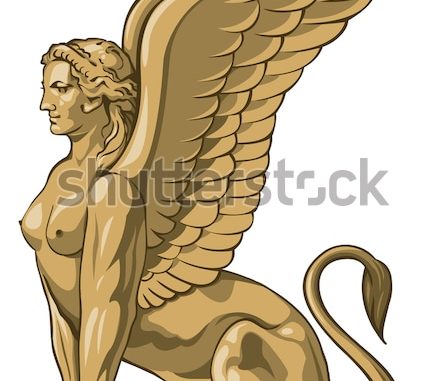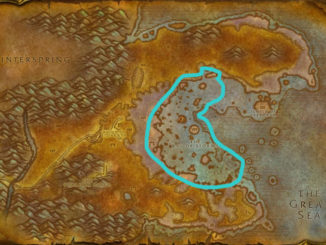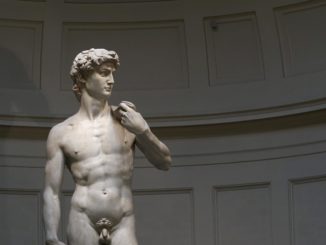
The Sphinx is best described as a symbol of “arcane wisdom” (Olderr 126), and wicked power in ancient Greece around 1200 BCE. Her disposition is depicted by the mythical story associated with her, specifically, her interactions with Oedipus . The Sphinx had also existed much earlier with other meanings in cultures such as Egypt. Since that time, its symbolism has become so captivating that its meaning is almost proverbial in the Western World today (Britannica 16).
The Sphinx truly fits her title as a beast. In the Greek legend, the Sphinx is a female symbol with the body and feet of a lion, the head and breasts of a woman, and the wings of an eagle (Scafella 179). Albeit the sphinx literally described sounds hideous, the visual portrayals of ancient Greece are nonetheless enticing. Such representations most commonly appeared on ivories, painted plaques, and pottery (Britannica 16). Although there are many representations of the sphinx, for the purposes of this essay, the example used is the Greek Sphinx seated on a short ionic column before Oedipus. This representation is painted on an Athenian vase from the Archaic Period in Greece, between 800 and 500 BCE (Boardman 246).
The name “Sphinx” is a Greek name derived from the verb sphiggein, which means “to draw tight or to bind together” (qtd. in Scafella 179). Her myth is well described by Albert E. Cowdrey in his fictional story The Name of the Sphinx: “Her function was to harass and obstruct Thebes’s tourist trade by forcing visitors to answer a riddle. If they got it wrong, she killed them” (104). She asked this riddle, taught to her by the Muses : “What is it that has one voice, and yet becomes four-footed and two-footed and three-footed?” (Britannica) Even though it is not explicit in the ancient myth, the meaning of her name suggests she may have killed those who answered incorrectly by strangling them. Her role links her directly to another ancient myth, the tragically ironic story of Oedipus.
Oedipus was the prince of Thebes, who was abandoned by his father when he was born because of a prophecy that his son would kill him. His father bound his feet together and left him on a lonely mountain (Encarta). Oedipus eventually wandered back to Thebes, which was plagued by the Sphinx. Upon being asked her question, however, Oedipus answered correctly: “Man, who crawls on all fours in infancy, walks on two feet when grown, and leans on a staff in old age” (Britannica 16). The sphinx was so distraught, she jumped from her perch and killed herself. The story continues that the Thebans were so grateful to Oedipus that they offered him kingship, which was rightfully his anyway, and he unwittingly married the his mother, the Queen (Encarta).
The Sphinx appeared in Greece for the first time around 1600 BCE, but it was not until later, around 1200 BCE, that the legend took on a identifiable meaning and developed into what is commonly known today. Before the Greek time, however, the Sphinx as a symbol had existed for over one thousand years in cultures such as in Egypt, where it is most commonly agreed to have originated (Scafella 180). While many characteristics have stayed the same in the Sphinx, some central ones have changed. The most obvious distinction is the sex of the Sphinx. Whereas the Egyptian Sphinx was exclusively male, the Greek Sphinx was almost always female. The Greek Sphinx was used typically as a symbol of wisdom and malignance, whereas the Egyptian Sphinx, especially in its earliest forms, was often associated with divinities, and was used as a symbol of protection. It had no mysterious or deceitful nature. An example of this role is his presence “before the temples of the Nile Valley, outside the pyramid of Kaphren” (Suhr 97). Moreover, in Egypt, the Sphinx did not have wings and was often recumbent, contrary to the Greek Sphinx, which was usually sitting, especially on her tall perch at Thebes (Scafella 180).
Looking at the deepest symbolisms of the sphinx, she may well be one of the most elusive symbols of human history. While many theories converge and digress like choppy waves, they have but one likeness, that her meaning is, over all else, enigmatic. One prominent idea, however, is the obvious reference to intelligence being coupled with animalism: “…the hybridizing of man and lion suggests the dominance of human intellect over raw animal power” (Hajar). This idea is further elucidated by Friedrich Hegel, a German philosopher in the 1800s: “The human head that bursts from the animal body represents Mind as it begins to raise itself above Nature… without, however, being able to liberate itself wholly from its fetters” (qtd. in Scafella 185). These ideas do well with the time period in which they are situated, in that civilization and war were competing realities of everyday life.
Another interesting interpretation is that the sphinx is a purely psychological symbol, representing the complexity and duality of the human mind: “Unlike many mythical creatures, the sphinx was never believed to be more than a thing of the imagination” (Hajar). In today’s Freudian terms, the Sphinx would be considered an element of the unconscious, of whose presence we are certain only due to the tangible consequences of her existence (Cirlot 304).
Lastly, on a far diverging note, a theory eloquently conjectures that “the mask of the sphinx pertains to the mother image and also to nature-symbolism; but beneath the mask lies the implications of the myth of multiplicity or of the enigmatic fragmentation of the cosmos” (Cirlot 304). Although, following with the accepted theme of deceitfulness, this theory is unique in expressing a superficial motherly side of the Sphinx, evidently derived of her prominent breasts. It is noteworthy that feminine symbols, which almost always refer exclusively to affection and compassion, are used in the Sphinx, an opposite symbol of wrath. It is possible, as Cirlot alludes, that such symbols are used to dramatise the underlying symbolism by using a misleading physical appearance.
From her slow rise to power from ancient Egyptian myth to Greek legend and today’s colloquial awareness, the Sphinx has become the visual embodiment of deceit, wrath, enigma, and intelligence. Her death is a memory of triumph over animal rage. But that memory is a fallacy that haunts the mind. Human triumph did not end the symptom of animalism, nor the malignance of intelligence. It ended only the visual depiction of a reality to which humankind is forever victim, its own collective mind. The brilliance of the Sphinx is thus, to deceive more in fake demise than when she lived.
Works Cited
Boardman, John. Athenian Red Figure Vases: The Archaic Period. London: Thames and Hudson, Ltd., 1975.
Britannica, Encyclopaedia. “Sphinx.” Encyclopaedia Britannica: 200th Anniversary Edition. Vol. 21. USA: William Benton, 1969.
Encarta Encyclopedia. “Oedipus.” Microsoft Encarta Online Encyclopedia 2005. http://encarta.msn.com/encyclopedia_761557812/Oedipus.html
Cowdrey, Albert E. “The Name of the Sphinx.” Fantasy and Science Fiction. Vol. 107, Issue 6 (December, 2004): 100-120.
Cirlot, J.E. A Dictionary of Symbols. Great Britain: Redwood Books, Towbridge, Wiltshire, 1971.
Hajar, Rachel. “Culture: Folk Wisdom of the Sphinx.” World & I. Vol. 14, Issue 2 (February, 1999): 228.
Older, Steven. Symbolism: A Comprehensive Dictionary. Jefferson: McFarland & Company, Inc., 1986.
Soans, Catherine, and Alan Spooner, eds. “Sphinx.” Oxford Dictionary Thesaurus. New York: Oxford University Press Inc., 2001.
Scafella, Frank A. “The Sphinx.” Mythical and fabulous creatures: a source book and research guide. Ed. Malcolm South. New York: Peter Bedrick Books, 1987.
Suhr, Elmer G. “The Sphinx.” Folklore. Vol. 81, No. 2 (Summer, 1970): 97-111.
Proudly WWW.PONIREVO.COM



